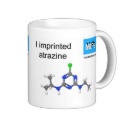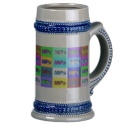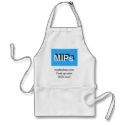|
|
Reference type: Journal
Authors: Lieberzeit PA, Halikias K, Afzal A, Dickert FL
Article Title: Polymers imprinted with PAH mixtures-comparing fluorescence and QCM sensors.
Publication date: 2008
Journal: Analytical and Bioanalytical Chemistry
Volume: 392
Issue: (7-8)
Page numbers: 1405-1410.
DOI: 10.1007/s00216-008-2413-1
Abstract: Abstract: Molecular imprinting with binary mixtures of different polycyclic aromatic hydrocarbons (PAH) is a tool for design of chemically highly sensitive layers for detection of these analytes. Sensor responses increase by one order of magnitude compared with layers imprinted with one type of template. Detection limits, e.g. for pyrene, reach down to 30 ng L?1 in water, as could be observed with a naphthalene and pyrene-imprinted polyurethane. Comparing sensor characteristics obtained by QCM and fluorescence reveals different saturation behaviours indicating that, first, single PAH molecules occupy the interaction centres followed by gradual excimer incorporation at higher concentrations finally leading to substantial quenching, when all accessible cavities are occupied. The plateau in the mass-sensitive measurements suggests that up to 80% of the cavities generated in the MIP are re-occupied. Displacement measurements between chrysene and pyrene revealed that for imprinted layers with very high pyrene sensitivities the signals of both PAH are additive, whereas in materials with lower pyrene uptake the two analytes replace each other in the interaction sites of the polymer
Template and target information: polyaromatic hydrocarbon mixtures, PAH, naphthalene, pyrene, acenaphthene, chrysene, perylene
Author keywords: PAH detection, chemical sensors, molecular imprinting, fluorescence, QCM
|


 atrazine template mug ball and stick model
atrazine template mug ball and stick model







 multi MIPs logo beer stein
multi MIPs logo beer stein







 mips logo apron
mips logo apron






